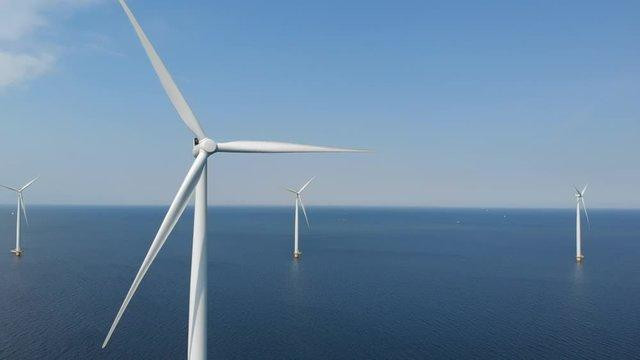Wind Turbine Technology Advancement for Condition Monitoring
Wind turbines today are equipped with advanced condition monitoring systems that collect operational data from various sensors installed in the nacelle and other components. This data helps operators track the performance and 'health' of each turbine. Earlier wind turbines had limited sensors that could only monitor basic functions. But newer wind turbine designs integrate many sensors that can monitor critical parameters like vibration, temperature, oil analysis, acoustic emission and more. This helps detect internal faults at an early stage before they cause serious damage. The use of IOT technology and cloud computing has also enabled remote condition monitoring of offshore and scattered onshore turbines.
Vibration Monitoring for Gearbox and Bearing Fault Detection
Vibration signals contain useful information about the mechanical 'sounds' generated by moving parts inside the gearbox and other systems. An increase in vibration amplitude or unusual frequency characteristics can indicate faults developing in gears, bearings or other components. Most modern Wind Turbine Condition Monitoring System have accelerometers installed at strategic points to continuously monitor vibration. The condition monitoring system analyzes the vibration spectra for abnormalities. Any significant changes from the baseline are flagged as possible early indications of gear or bearing damage. This helps schedule maintenance before outright failures occur. Vibration monitoring plays a vital role in catching internal faults that are difficult to detect through other parameters.
Thermography for Electrical and Mechanical Component Inspection
Thermal imaging cameras are used to perform infrared thermography on the nacelle and other external parts. Temperature variations or hotspots can reveal problems in the electrical system, gearbox or other mechanical components. Thermography allows non-contact inspection of equipment in operation without needing to open up enclosures. Any parts running at abnormal temperatures compared to other identical turbines can be further examined. This technique is especially useful for periodically checking the condition of blades, generators, switchgears and transformers from a distance. It provides a visual way to identify failures in early stages and aids predictive maintenance planning.
Analysis of Wind Turbine Control Parameters
Most modern wind turbine condition monitoring system have a supervisory control and data acquisition or SCADA system to monitor operational parameters. Important control signals, setpoints and actual values are continuously logged by the turbine controller. Deviations outside normal ranges could indicate control component faults, software/programming issues or electrical/mechanical performance degradation over time. The condition monitoring system studies trends in parameters like active power control, yaw and pitch reference signals. Any unexplained or persistent deviations are evaluated to recognize emerging problems for attention. Real-time monitoring of control logics assists in evaluating turbine performance holistically.
Using Acoustic Emissions to Detect Blade or Gear Damage
Acoustic emission sensors placed at different locations can listen for distinctive sounds generated by mechanical or structural failures developing inside operating components. Blades exposed to varying wind and structural loads produce acoustic signatures that change with damage propagation. Similarly, friction or cracks in gears and bearings emit acoustic events perceptible through sensors. The condition monitoring software analyzes acoustic data for unusual burst events or changes in baseline acoustic emission patterns. This non-intrusive method helps identify blade damage, cracks or gear/bearing wear at a very early stage to allow timely repairs or part replacements. Acoustic monitoring complements vibration monitoring for catching subtle faults.
Remote Monitoring and Analytics for Improved O&M
Modern wind farms rely on a central SCADA system to aggregate real-time data from all turbines. This supervisory system pushes critical operational parameters and alarms to cloud-based servers for storage and advanced analytics. Remote asset performance monitoring applications then analyze terabytes of operational data using machine learning algorithms. They generate automated reports on turbine health, anomalies, prediction of failures and recommendations for maintenance. This remote analytics approach allows wind farm operators to continuously track the overall "health profile" of all turbines from any location. Predictive maintenance strategies can optimize spare part inventory and crew scheduling for improved efficiency of operations and maintenance activities.
Advanced wind turbine condition monitoring system employing multiple sensing technologies play a pivotal role in achieving higher availability levels from wind power projects. Their ability to detect internal mechanical and electrical faults at incipient stages enables predictive and preventive maintenance approaches. This helps reduce unplanned downtime while also improving the working life of expensive components like gearboxes. Remote monitoring further aids in data-driven optimization of wind farm operations and maintenance through analytics. Overall, condition monitoring solutions strengthen the business case for wind power by enhancing profits through increased energy production and reduced life cycle costs of operations.
Get More Insights on Wind Turbine Condition Monitoring System Market
Select the language you're most comfortable with-
About Author-
Alice Mutum is a seasoned senior content editor at Coherent Market Insights, leveraging extensive expertise gained from her previous role as a content writer. With seven years in content development, Alice masterfully employs SEO best practices and cutting-edge digital marketing strategies to craft high-ranking, impactful content. As an editor, she meticulously ensures flawless grammar and punctuation, precise data accuracy, and perfect alignment with audience needs in every research report. Alice's dedication to excellence and her strategic approach to content make her an invaluable asset in the world of market insights.
(LinkedIn: www.linkedin.com/in/alice-mutum-3b247b137 )

